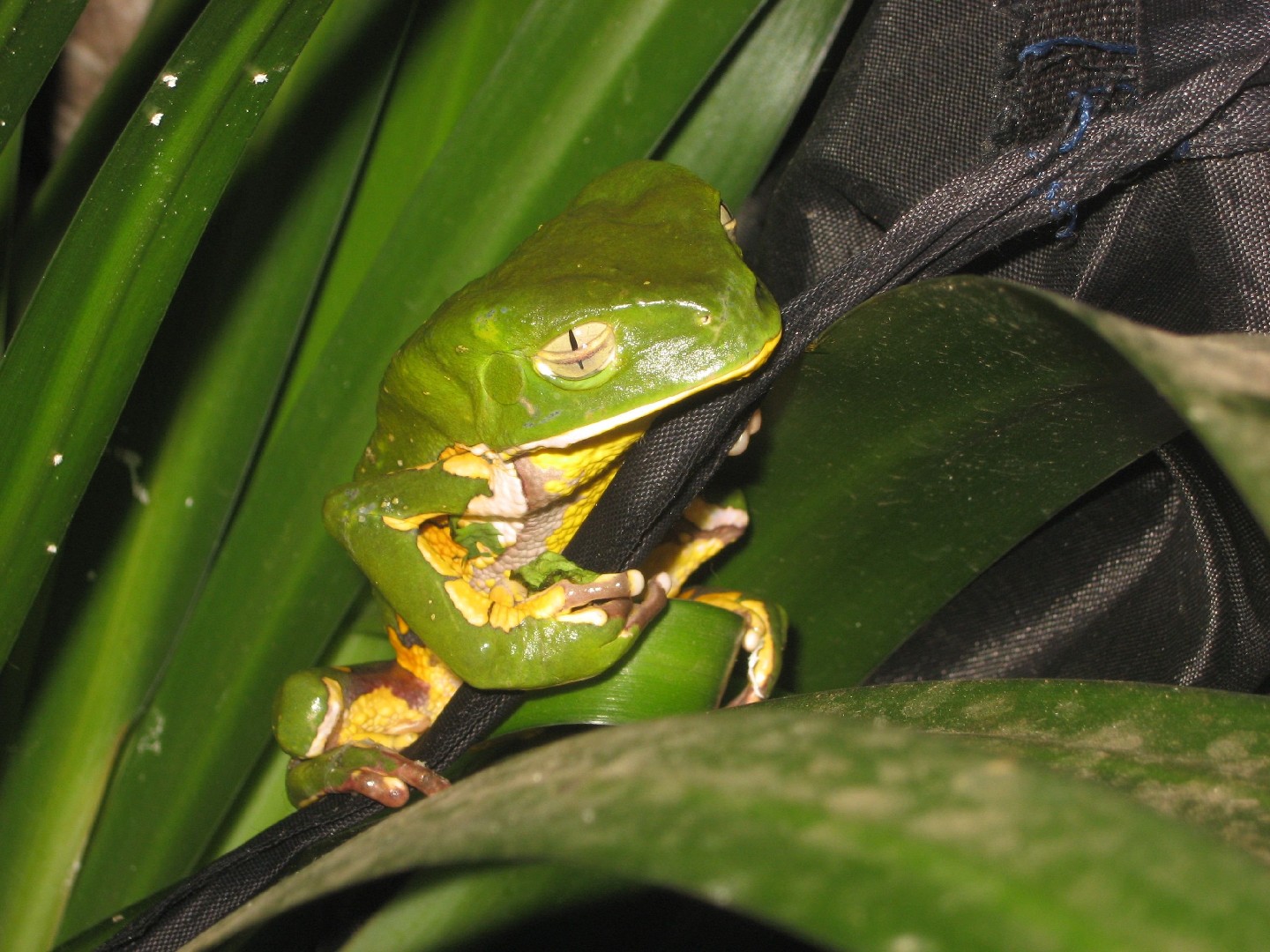Brazilian common walking leaf frog
A species of Phyllomedusa Scientific name : Phyllomedusa burmeisteri Genus : Phyllomedusa
Brazilian common walking leaf frog, A species of Phyllomedusa
Scientific name: Phyllomedusa burmeisteri
Genus: Phyllomedusa
Content
Description General Info
 Photo By André Koehne , used under CC-BY-3.0 /Cropped and compressed from original
Photo By André Koehne , used under CC-BY-3.0 /Cropped and compressed from original Description
Phyllomedusa burmeisteri (Burmeister's leaf frog, common walking leaf frog) is a hylid frog native to the Atlantic Forest biome in Brazil, specially in Ouro Preto. This species is now jeopardized by biopiracy because it produces a waxy secretion that has medicinal uses.
General Info
Lifespan
5-8 years
Diet
Brazilian common walking leaf frog's dietary habits primarily consist of small invertebrates. It particularly prefers insects such as spiders and beetles, which it actively hunts, utilizing its excellent jumping ability to catch prey.
Appearance
Brazilian common walking leaf frog is a medium-sized tree frog with a soft, rubbery skin, and has a distinctive lime-green color. It comes with a white ventral side. Its eyes are silver with a vertical pupil. Its fingers and toes are strongly webbed and it has a small toe disc at the end. Unique to this species is its two distinct skin folds that run from the eye to the shoulder.
Behavior
Brazilian common walking leaf frog are solitary, arboreal creatures typically active at twilight and during the night. They are noted for their mating call and complex reproductive behaviors such as egg deposition. The survival of brazilian common walking leaf frog relies heavily on their leaf-green skin, enabling effective camouflage within the foliage of their natural rainforest habitat.
Population
Stable
Scientific Classification
Phylum
Chordates Class
Amphibians Order
Frogs and toads Family
Tree frogs and their allies Genus
Phyllomedusa